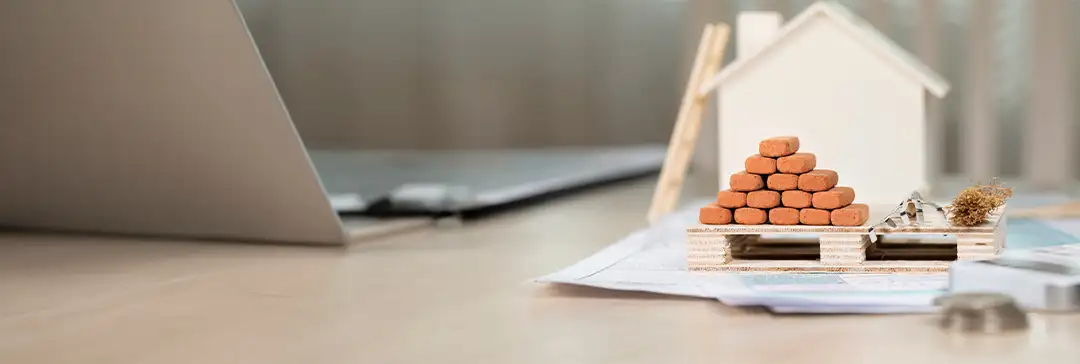In India, many methods are available to construct low-cost homes compared to other countries. Many builders have devised a solution for low-cost home construction materials through low-cost construction techniques in India to sort out this problem. Cheap home construction materials are nothing, but the cost and materials vary in terms of sustainability, and they are a permanent housing solution for people from low- and middle-income groups.
- 1 Best Low-Cost Home Construction Materials in India
- 1.1 1. Bamboo
- 1.2 2. Fly Ash Bricks:
- 1.3 3. Hollow Concrete Blocks:
- 1.4 4. Filler Slab Materials:
- 1.5 5. Prefabricated Materials:
- 1.6 6. Compressed Earth Block:
- 1.7 7. Precast Concrete Panels:
- 1.8 8. Glass Fibre Reinforced Gypsum Panel:
- 1.9 9. Shipping Container Homes:
- 1.10 10. Autoclaved Aerated Concrete Or AAC:
- 2 FAQs
Best Low-Cost Home Construction Materials in India
1. Bamboo
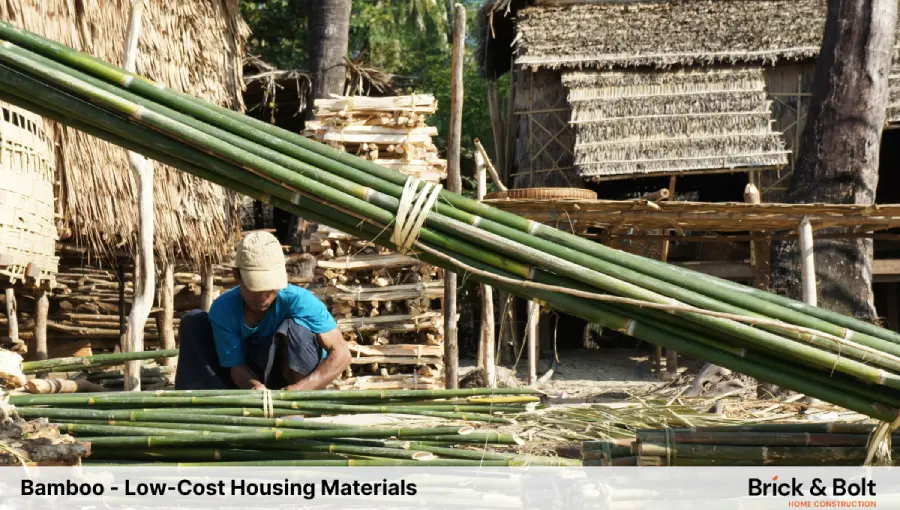
Bamboo is one of the most significant crops in India. The average yearly production of bamboo in India is 3.23 million tons. But no one knows the beneficial use of bamboo as a construction material. Some of the rural areas of countries in Asia and Africa are still constructing bamboo homes. Bamboo is a low-cost, low-weight and durable material compared to other materials. However, you should take some precautions when using bamboo in construction, such as treating it with appropriate chemicals to make it termite-resistant. Because its fibres run axially or along the length of the pole, bamboo has been discovered in some studies to have a stronger tensile strength than steel. This makes bamboo a carbon-smart substitute for steel structural members or rebar. People use advanced bamboo sheets as an alternative to housing steel sheets for roofing purposes in homes.
2. Fly Ash Bricks:
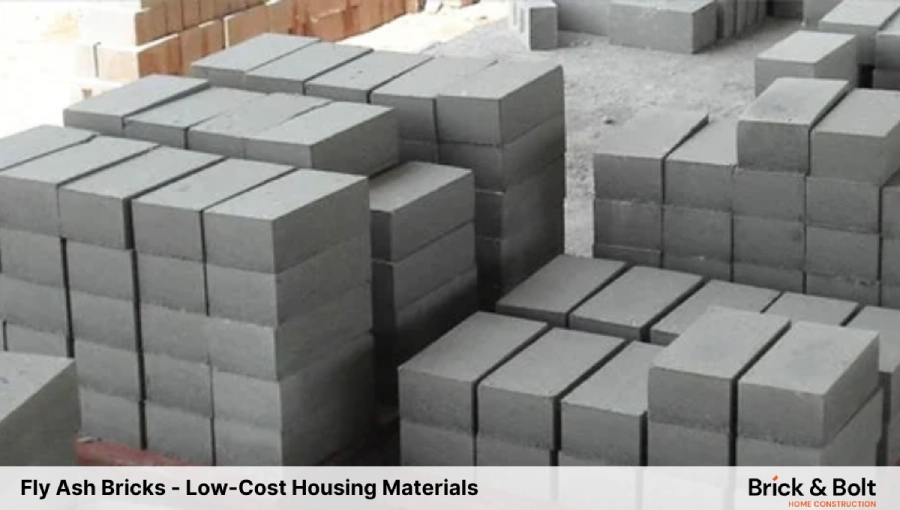
For Home construction, you need to choose the best quality bricks thus Fly ash bricks are high-quality bricks with lighter weight than clay bricks. Fly ash bricks are less porous and absorb less water to reduce dampness or other attacking properties from walls. The main advantages of fly ash bricks are that they are cost-efficient, eco-friendly, fire-resistant, and lightweight construction materials. Using fly ash bricks, you can save money with immense benefits.
3. Hollow Concrete Blocks:
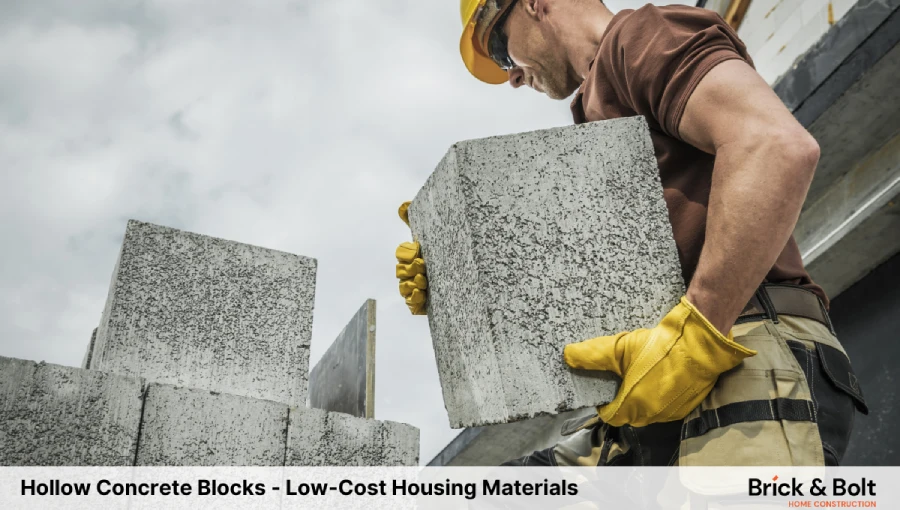
The hollow concrete blocks are one of the most beneficial low-cost building materials. Hollow concrete blocks are precast concrete blocks with open spaces or cavities in their interior. They are made by pouring concrete into a mould shaped to form the block’s exterior surface, leaving the interior hollow. Insulation, electricity, plumbing and other utilities use hollow concrete blocks. Hollow concrete blocks are widely used in buildings, railroad infrastructure, and other large construction projects. Hollow concrete blocks have various advantages, such as being cost-effective, eco-friendly, highly durable and requiring less time to work with.
4. Filler Slab Materials:
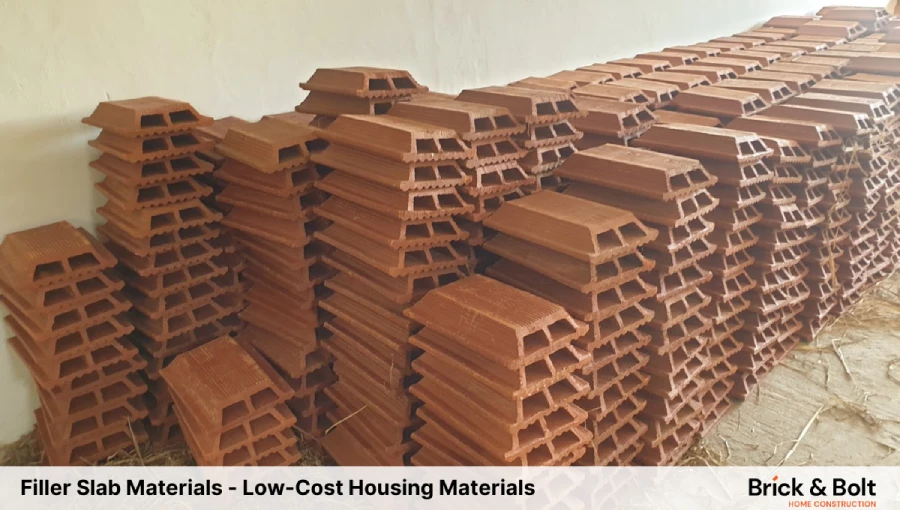
Filler slab materials, also known as lightweight aggregate, are a mixture of sand-sized particles made from various resources, such as crushed stone, glass, and slag. They are used in the production of concrete, as they help to reduce the overall weight of the concrete mixture while still providing structural strength. The main benefits of filler slab materials are that they can be used in a wide range of applications, including in the construction of buildings, highway overpasses, and other large-scale infrastructure projects.
5. Prefabricated Materials:
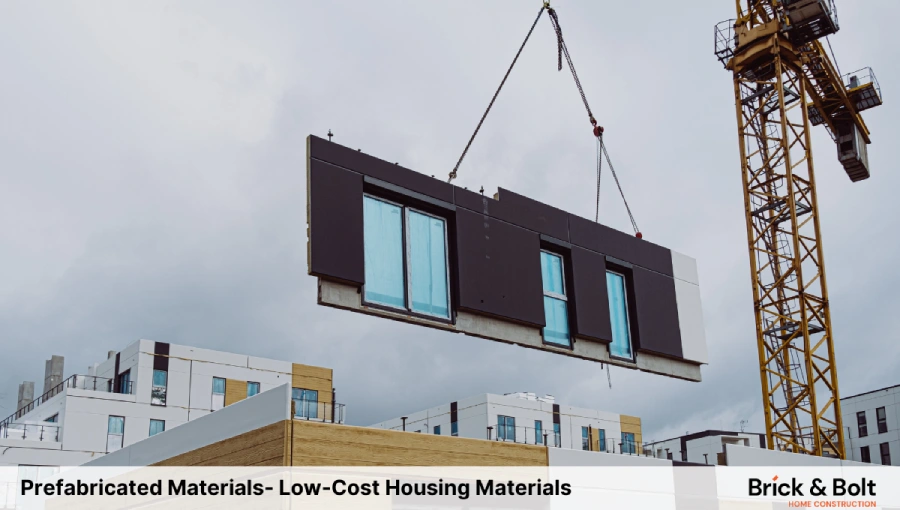
Prefabricated materials are made in a closed place or factory to protect them from exterior elements. They include doors, windows, and floor panels. A significant advantage of prefabricated materials is that they can use recycled materials. Prefabricated materials are eco-friendly construction materials that make construction work easier and faster and are highly durable.
6. Compressed Earth Block:
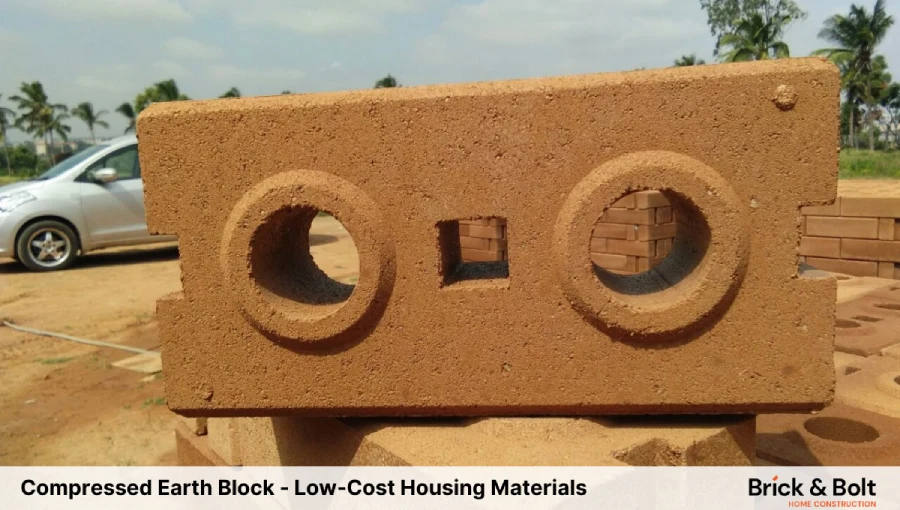
Compressed earth block mixes dry inorganic subsoil, clay, sand and aggregate. It requires dampening and mechanical pressing at high pressure. If you use a chemical cement binder along with these products, you will get a compressed stabilised earth block, which is highly water resistant. The main advantages of compressed earth blocks are fire resistance, insect resistance, mould resistance, temperature control, etc.
7. Precast Concrete Panels:
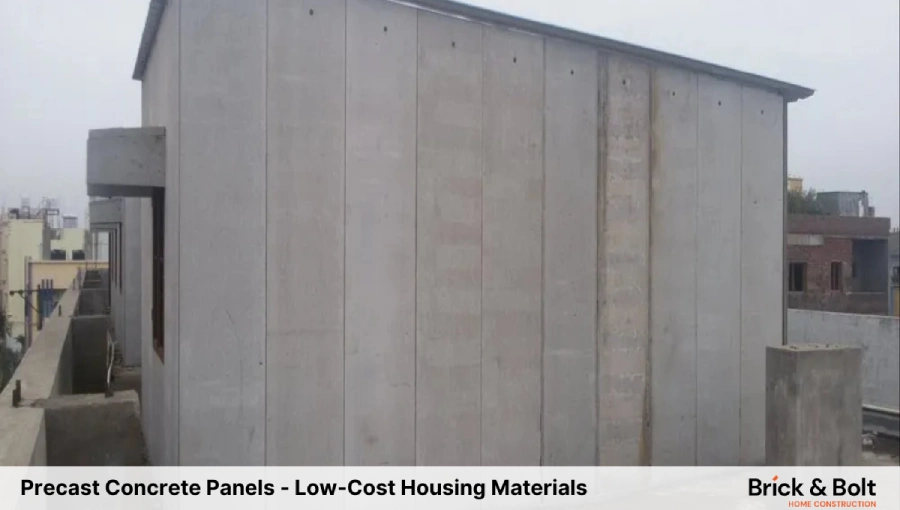
Precast concrete panels are prefabricated, reinforced concrete elements designed for easy installation and cost-effectiveness. These panels can be used in various construction projects for exterior and interior walls, floors, and ceilings. They provide strength, durability, and fire resistance and can be customised to suit specific project requirements. Precast concrete panels are built off-site in a controlled environment, which helps to minimise waste, increase productivity, and ensure consistency in quality. They are often used in multi-unit residential, commercial, and industrial buildings.
8. Glass Fibre Reinforced Gypsum Panel:
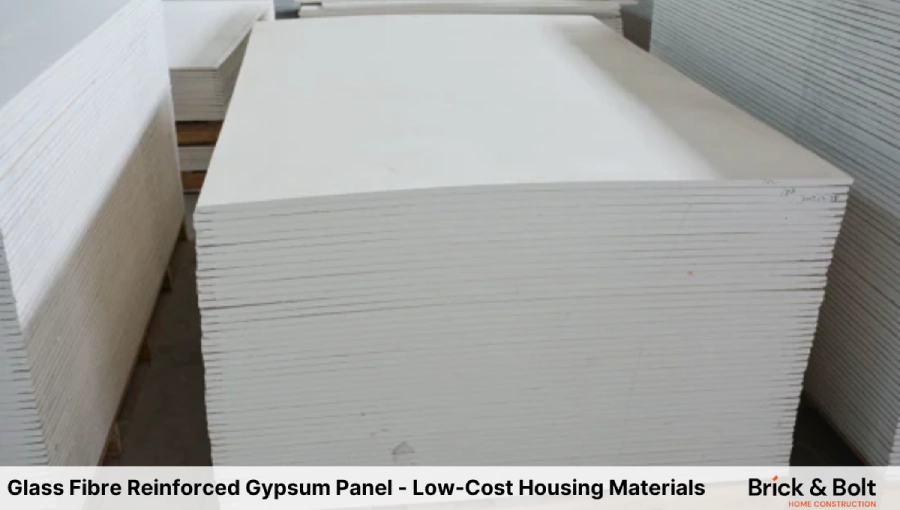
Glass fibre reinforced panel is a construction material that combines gypsum with glass fibres to create a strong, lightweight and durable panel. People commonly use these panels in exterior and interior construction, such as partition walls and decorative elements. The main benefits of glass fibre-reinforced gypsum panels are quick installation, lightweight, fire resistance, sound insulation, etc.
9. Shipping Container Homes:
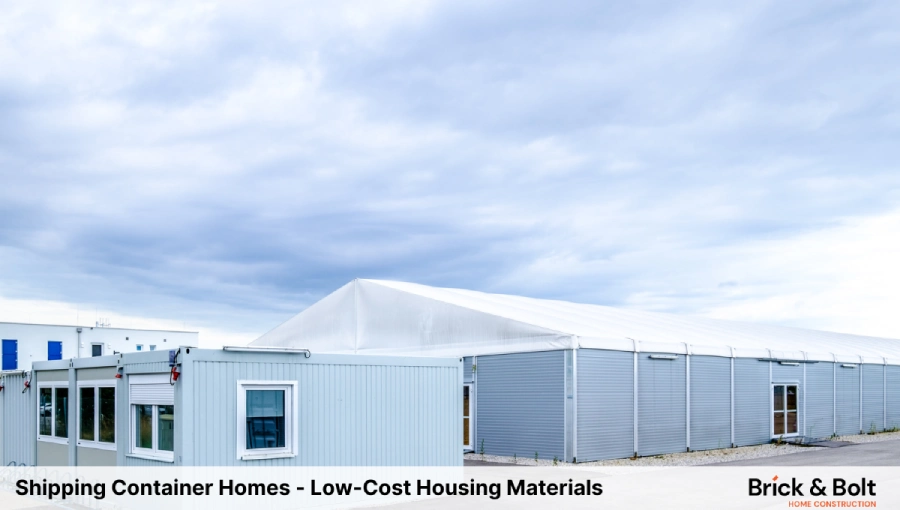
People construct container homes from repurposed shipping containers. They are often more affordable compared to other low-cost house construction materials. They are made from the steel containers used for transporting goods on ships. The main advantage of shipping container homes is that they are portable, and you can customise them based on your preference, they are also durable and affordable.
10. Autoclaved Aerated Concrete Or AAC:
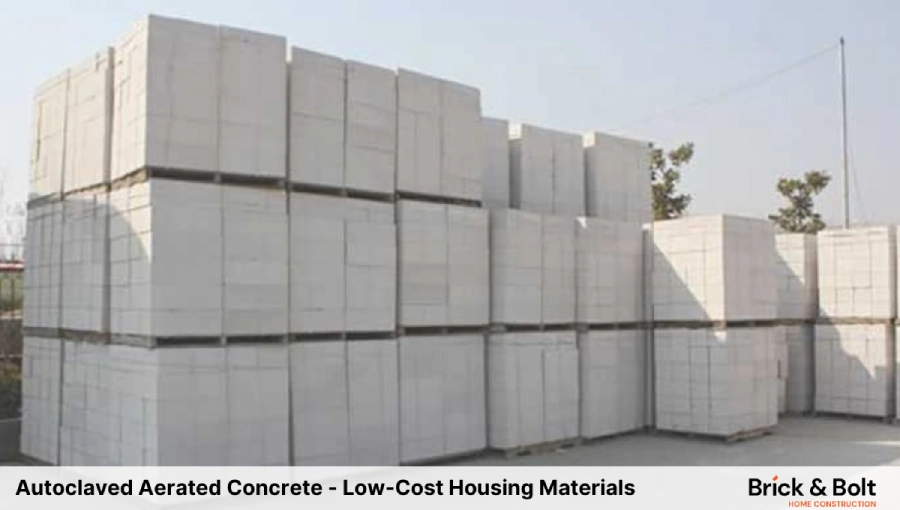
Autoclaved Aerated Concrete (AAC) is a building material produced by air bubbling through a mixture of cement and aggregates, usually sand and gravel. This process results in a lightweight, strong, and durable concrete with better insulation and sound absorption properties. The advantages of AAC are widely used in the construction industry for various applications such as walls, floors, ceilings, and columns. Autoclaving seals and solidifies the mixture, making it suitable for extreme environments. AAC is often compared to foam boards but is considered more durable and can be used in higher load-bearing structures.
In one way or another, low-cost home-building materials can help you save time and money. We’ve looked at many different types of low-cost building materials. These materials contribute to long-lasting, environmentally friendly, and energy-efficient building materials while lowering construction costs. To create a house in India using affordable building methods and supplies, you should be aware of Indian contractors or the top building firms in the country.
FAQs
What is the least expensive material to build a house?
Bamboo is one of the least expensive materials for building a house. It is cheap, eco-friendly, and very strong. It suits many construction uses.
What is cheaper than bricks?
Fly ash bricks are cheaper than traditional clay bricks. They are made from industrial waste. This cuts costs. They are lightweight and have better insulation.

